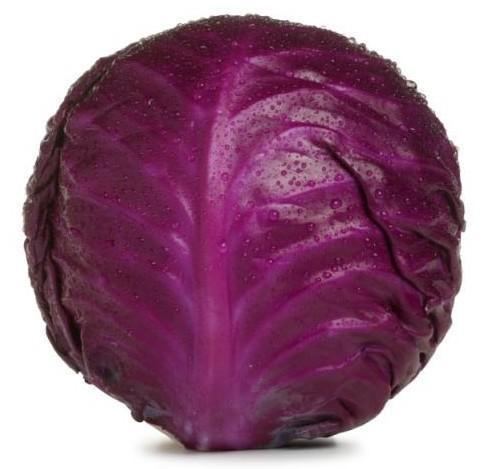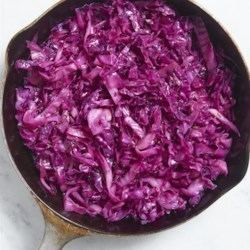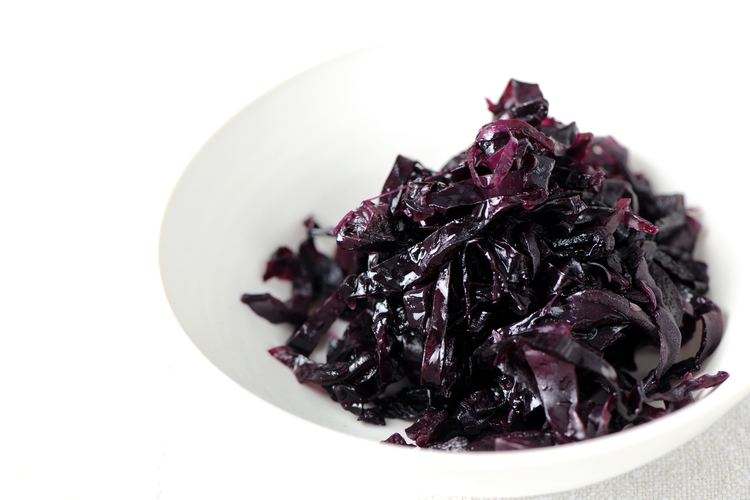Kingdom Plantae Family Brassicaceae Species B. oleracea | Order Brassicales Genus Brassica | |
 | ||
Similar Cabbage, Brussels sprout, Coleslaw, Beetroot, Kale | ||
Warm red cabbage salad
The red cabbage (purple-leaved varieties of Brassica oleracea Capitata Group) is a kind of cabbage, also known as purple cabbage, red kraut, or blue kraut after preparation. Its leaves are coloured dark red/purple. However, the plant changes its colour according to the pH value of the soil, due to a pigment belonging to anthocyanins. In acidic soils, the leaves grow more reddish, in neutral soils they will grow more purple, while an alkaline soil will produce rather greenish-yellow coloured cabbages. This explains the fact that the same plant is known by different colours in various regions. Furthermore, the juice of red cabbage can be used as a home-made pH indicator, turning red in acid and green/yellow in basic solutions. It can be found in Northern Europe, throughout the Americas, and in China.
Contents
- Warm red cabbage salad
- How to cook red cabbage sabzi vegetarian dish recipe bandh gobhi patta gobhi
- Uses
- Cultivation
- pH indicator
- Nutrition
- References
On cooking, red cabbage will normally turn blue. To retain the red colour it is necessary to add vinegar or acidic fruit to the pot.
Red cabbage needs well fertilized soil and sufficient humidity to grow. It is a seasonal plant which is seeded in spring and harvested in late fall. Red cabbage is a better keeper than its "white" relatives and does not need to be converted to sauerkraut to last the winter.

How to cook red cabbage sabzi vegetarian dish recipe bandh gobhi patta gobhi
Uses

Red cabbage is often used raw for salads and coleslaw. This vegetable can be eaten cooked. It is the traditional accompanying side dish paired with many German meals—most notably, Sauerbraten. At Christmas it can be spiced and served as an accompaniment to seasonal roast goose.
Cultivation
It is recommended to start red cabbage seeds indoors 4 weeks before the last frost. Sow in containers that allow for movement of water through the bottom of a cell. Popular seedling starting containers are peat pots, egg cartons, plug trays or milk cartons. Once the seedlings grow to about 2 inches (5.1 cm) tall, and have developed their first leaves, they can be hardened off and moved outside for transplanting. Red cabbage prefers climates that remain moist and cool for most of its vegetative growth stage, so they can be placed in the ground shortly after the last frost, while the spring is still cool. The cabbage plants can be spaced about 12–26 in (30–66 cm) from one another. They will need watering often but are otherwise low maintenance plants.
pH indicator

Red cabbage contains an anthocyanin-based dye that can be used as a pH indicator. It is red, pink, or magenta in acids, (pH < 7), purple in neutral solutions (pH ~ 7), and ranges from blue to green to yellow in alkaline solutions (pH > 7).
Nutrition
Red cabbage has ten times more vitamin A and twice as much iron as green cabbage.
